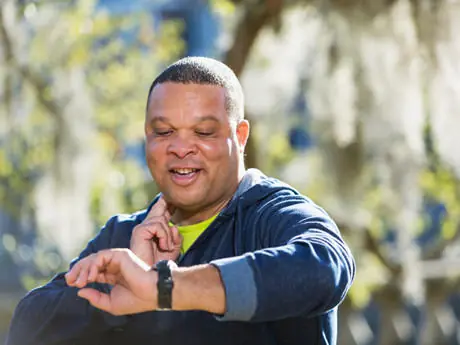
Here's some good news for all those hopelessly time-crunched individuals out there: it's not the amount of minutes you spend exercising that matters, it's your heart rate.
Your heart rate reveals a lot about your fitness and endurance health. It shows when you can push yourself a little more or when you should back off a bit.
Your target heart rate zone (according to the popular Karvonen method) is 60 to 85 percent of your maximum heart rate (which is calculated as 220 minus your age). The more fit you are, the higher percentage of your maximum heart rate you can safely hold, and the longer you can hold it. It's important to note that all heart rate numbers are measured in beats per minute (BPM).
More: Why Add Variation to Your Training Routine
There are many heart rate zones that you should be mindful of depending on the type of training you're doing and the training philosophy you happen to follow. For endurance and weight-loss training, you should pay attention to these three:
- Active recovery (220 minus your age, multiplied by 0.5)
- Target heart rate (220 minus your age, multiplied by between 0.6 and 0.8, depending on your fitness level)
- Lactate threshold (220 minus your age, multiplied by between 0.6 and 0.9, depending on your fitness level)
Working in your target heart rate zone is the sweet spot for fat loss and aerobic capacity improvement. If you regularly workout at slightly less than your target heart rate (around 40 to 50 percent of your maximum heart rate), you slip into the active recovery zone, which is a good place to stay during recovery days or in between high-intensity intervals, but won't give you any results in terms of aerobic capacity training.
More: HIIT Workout Challenge
If you workout above your target heart rate, you head into your lactate threshold zone, which is an intense workload on your heart, lungs and muscles. They start getting their energy by breaking down glycogen without oxygen—otherwise known as anaerobic respiration—rather than through a mix of fat and glycogen in the presence of oxygen. The level at which you will reach lactate threshold depends on many factors, including your fitness level. If you're relatively untrained, then you might reach lactate threshold at around 60 percent of your maximum heart rate, meaning your lactate threshold and your target heart rate might overlap until you improve your fitness level.
Training at lactate threshold is important for endurance athletes and those looking to do high-intensity interval training (HIIT). However, if you're relatively fit and simply trying to workout to lose weight, the amount of time you spend at lactate threshold should be limited so that you're burning fat, not muscle.
Most highly trained athletes cannot sustain this intensity for longer than 30 to 60 minutes, and less-trained individuals would have trouble holding it for longer than 10 minutes.
To make it easy, use a target heart-rate calculator, which allows you to find the number you should be striving for during most of your workouts. The best way to keep track of your heart rate while exercising is to purchase a heart rate monitor. However, if you can't afford one or you like to keep things old school, you can measure your heart rate by simply keeping track of your pulse.
To find your pulse place two fingers on the upper side of your neck (your carotid artery) and count for six seconds, then simply add a zero to the number. There are obvious potential errors by using this shorthand method. If you have a heart rate monitor, this will give you a more accurate reading.
- 1
- of
- 2
About the Author

Get ACTIVE on the Go


Couch to 5K®
The best way to get new runners off the couch and across the finish line of their first 5K.
Available for iOS | Android






Discuss This Article